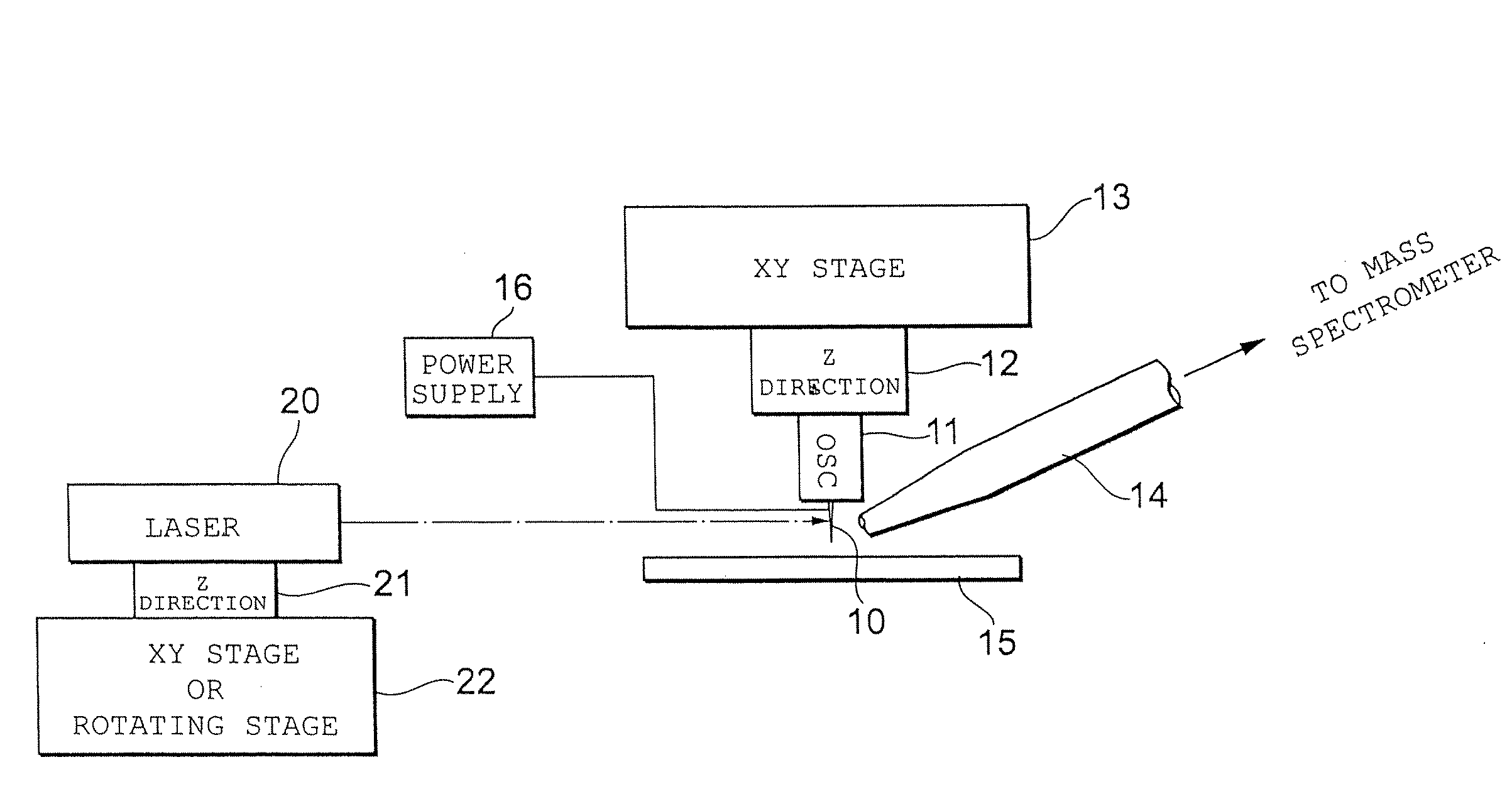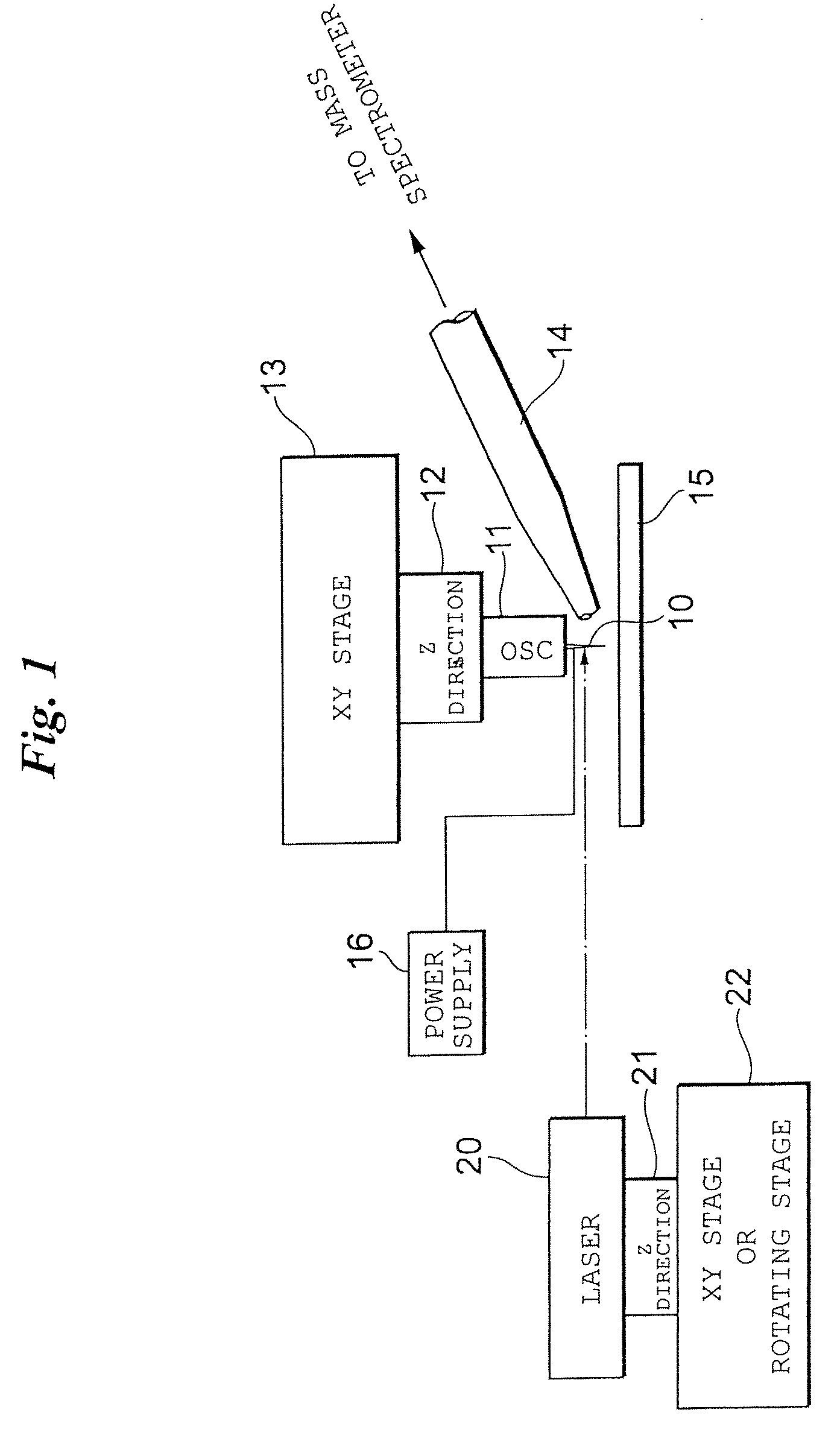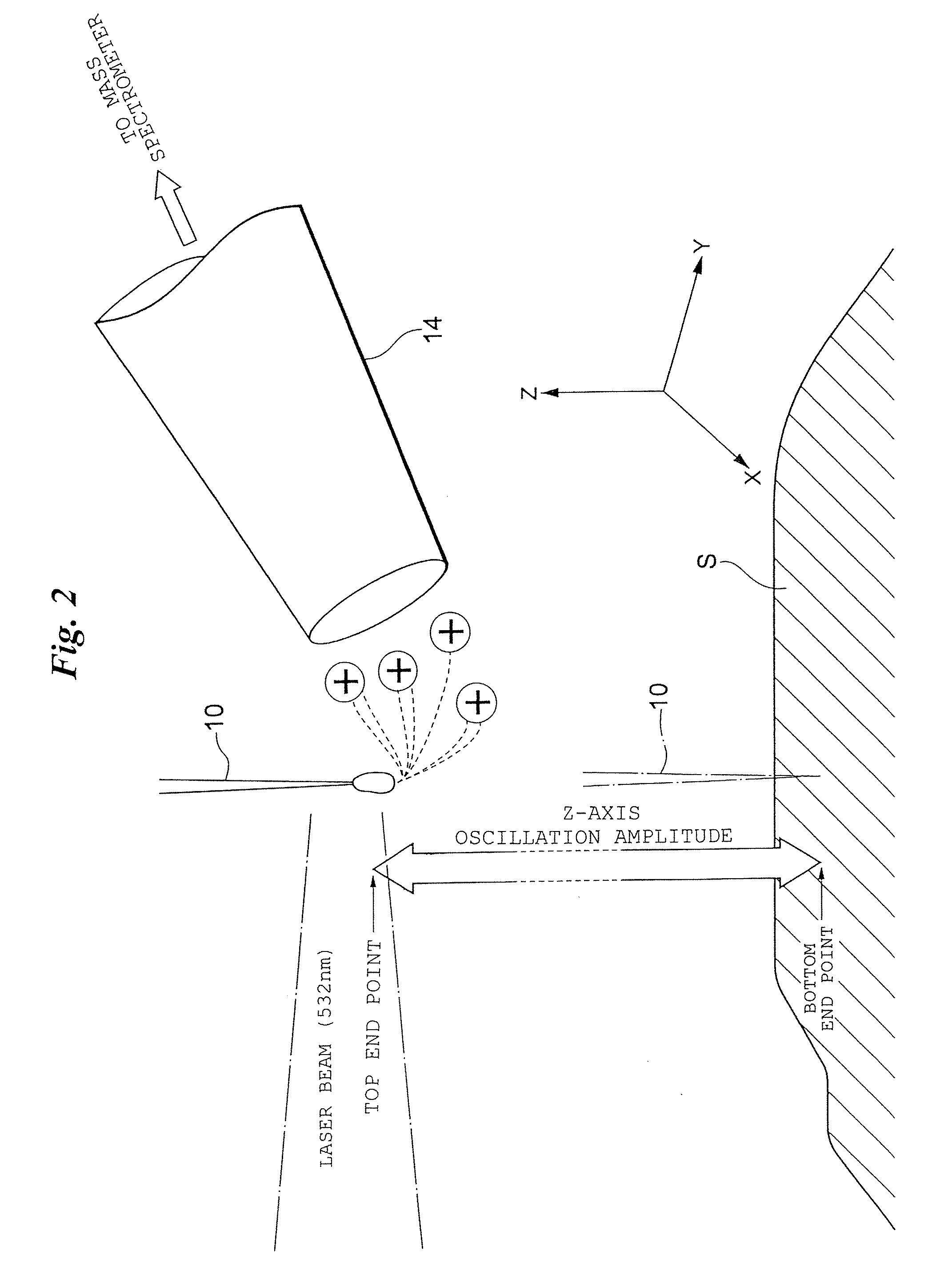Ionization method and apparatus using electrospray
a technology of electrospray and ionization method, which is applied in the direction of scanning probe technique, separation process, instruments, etc., can solve the problems of limited spatial resolution, difficult to reduce the beam diameter of the laser beam to less than several tens of microns, and limited spatial resolution
- Summary
- Abstract
- Description
- Claims
- Application Information
AI Technical Summary
Benefits of technology
Problems solved by technology
Method used
Image
Examples
first embodiment
[0063]FIG. 1 illustrates the configuration of an ionization apparatus capable of imaging according to a
[0064]This ionization apparatus is capable of operating under atmospheric pressure. Sample ions desorbed and ionized from a sample by this ionization apparatus are introduced to a mass spectrometry apparatus. Although an orthogonal time-of-flight mass spectrometer can be mentioned as an example of the mass spectrometry apparatus, the present invention is also applicable to a mass spectrometry apparatus such as a (linear) ion-trapping mass spectrometry apparatus.
[0065]A sample table 15 is secured to the ionization apparatus at a suitable location. A biological sample is placed on the sample table 15 as is (without being subjected to a pre-treatment, as in the case of MALDI). For the sake of convenience, the upper surface of the sample table 15 is adopted as the XY plane and the direction perpendicular thereto is adopted as the Z direction.
[0066]An XY stage 13 is placed above the sam...
second embodiment
[0080]FIG. 4 illustrates a This embodiment has a configuration ideal for biological samples.
[0081]A high vacuum is maintained in a mass spectrometry apparatus 40. A portion of the mass spectrometry apparatus 40 into which ions are introduced is provided with a skimmer 41. The skimmer 41 has a very small hole (ion introduction port) 41a.
[0082]An electrospray capillary 30 is placed at the front face of the skimmer 41 of the mass spectrometry apparatus 40 (in a space at atmospheric pressure outside the mass spectrometry apparatus 40). The capillary 30 is connected to the outlet port of a liquid chromatography apparatus 31, and liquid that is output from the liquid chromatography apparatus 31 is supplied to the capillary 30.
[0083]The metal probe 10 is driven in oscillatory fashion between the position of a miniscule droplet produced at the tip of the capillary 30 (the sample capture position, bottom dead center, bottom end point or lower-limit position) and a position spaced slightly ...
third embodiment
[0118]The characterizing feature of the third embodiment includes placing a side electrospray apparatus 50 at a position diagonally below the origin position (top end point) of the probe and spraying a charged droplet (from diagonally downward position) from the electrospray apparatus (preferably a nanoelectrospray) 50 toward a trace amount of sample, which has been captured at the tip of the probe 10 located at the top end point, thereby dissolving and spraying the sample and blowing it through the ion-sampling capillary 14 so that it is introduced into the mass spectrometry apparatus. If the electrospray solvent is one such as water, ethanol, methanol or other electrolyte, any of these can be used.
[0119]The electrospray apparatus (nanoelectrospray apparatus) 50 includes a very slender metal capillary 51 supplied with solvent, and an external cylinder 52 provided outside the capillary with a clearance therebetween. A high voltage is applied to the capillary 51.
[0120]It may be so ar...
PUM
 Login to View More
Login to View More Abstract
Description
Claims
Application Information
 Login to View More
Login to View More - R&D
- Intellectual Property
- Life Sciences
- Materials
- Tech Scout
- Unparalleled Data Quality
- Higher Quality Content
- 60% Fewer Hallucinations
Browse by: Latest US Patents, China's latest patents, Technical Efficacy Thesaurus, Application Domain, Technology Topic, Popular Technical Reports.
© 2025 PatSnap. All rights reserved.Legal|Privacy policy|Modern Slavery Act Transparency Statement|Sitemap|About US| Contact US: help@patsnap.com



